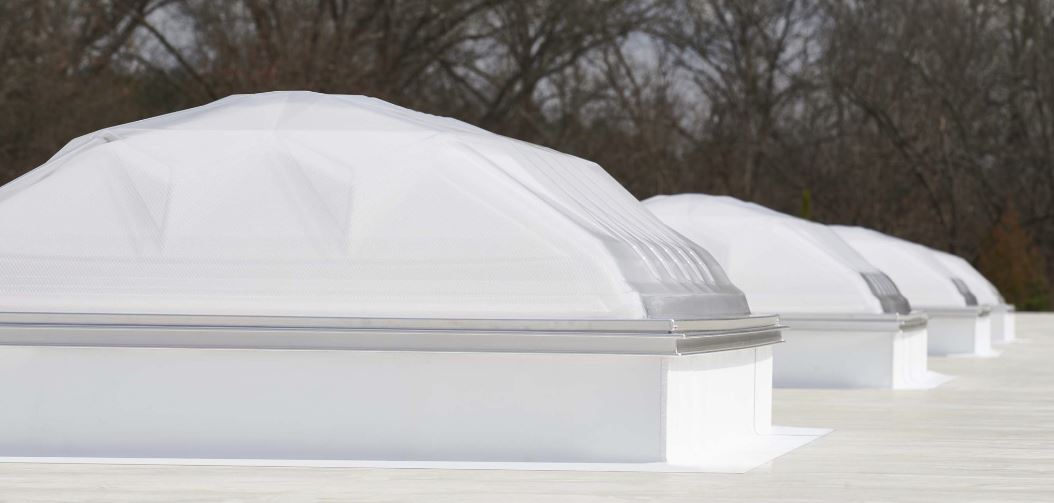FASTENERS AND ANCHORS
When not specified or supplied by the manufacturer, selection of fasteners must take into account corrosion resistance and compatibility with the substrate and other materials they may contact.
FLASHING
Flashing is critical to preserving the drainage plane, so flashing and seal- ant must be integrated with the roofing material and underlayment. There are several types and configurations of flashing applicable to different skylight mounts and roofing materials.
Step flashing, often used with skylights, is a system in which metal shingles or plates are used in a stair-step pattern under regular shingles and stepped up the vertical surface of a curb. The sequence for step flashing is to apply the sill first at the down-slope edge of the skylight or curb, resting it on top of the lower course of shingles. Step flashing is applied sequentially up the sides of the curb. Finally, the head flashing (saddle) is set in place.

A car dealership makes good use of a vaulted commercial skylight. PHOTO: Skyco Skylights
Counterflashing (or cap flashing) is often used to protect and waterproof (by overlapping) terminated top edges at curb or base flashing. Formed metal or elastomeric sheeting is secured onto a curb to cover and protect the upper edge of a base flashing and its associated fasteners.
Flashing for use with tile or corrugated metal roofing typically includes a bottom collar with a seamed-in corrugated conformable apron designed to fit over the top surface contour of the roofing.
In metal roofs, roofing material can act as the flashing, especially along the sides of a curb mount. Separate flashing collars are used at the top and bottom of the curb, bent into shape to attach to the sides.
WORKPLACE SAFETY
Of equal or greater importance than doing the job right is doing the job safely. Every year, several construction and maintenance workers are injured or killed by falling through skylight rough openings or installed units that were never intended to bear the associated point load. Codes are generally mum on the topic. Accordingly, roofing safety is an important aspect of skylight installation.
The responsibility for fall protection must be shared among the many parties involved with the design, construction and maintenance of roofs. Recommended safety procedures for minimizing risk require attention to the following basic safety practices:
- Only construction and building maintenance professionals should ever be on a roof.
- Applicable OSHA safety regulations should be complied with at all times.
- All individuals allowed to be on a roof must be fully trained on roof safety and should have the competence and sense of personal responsibility to follow recommended practices.
- Warning signage should be posted at each access point onto the roof.
In some cases, the use of railings, grids, external or internal screens, or specially designed products meeting a fall-protection standard may be employed.




Be the first to comment on "Avoid Problems with Skylights through Proper Installation"